Faces of COVID: Nevadans share stories of life, love and loss in the time of coronavirus
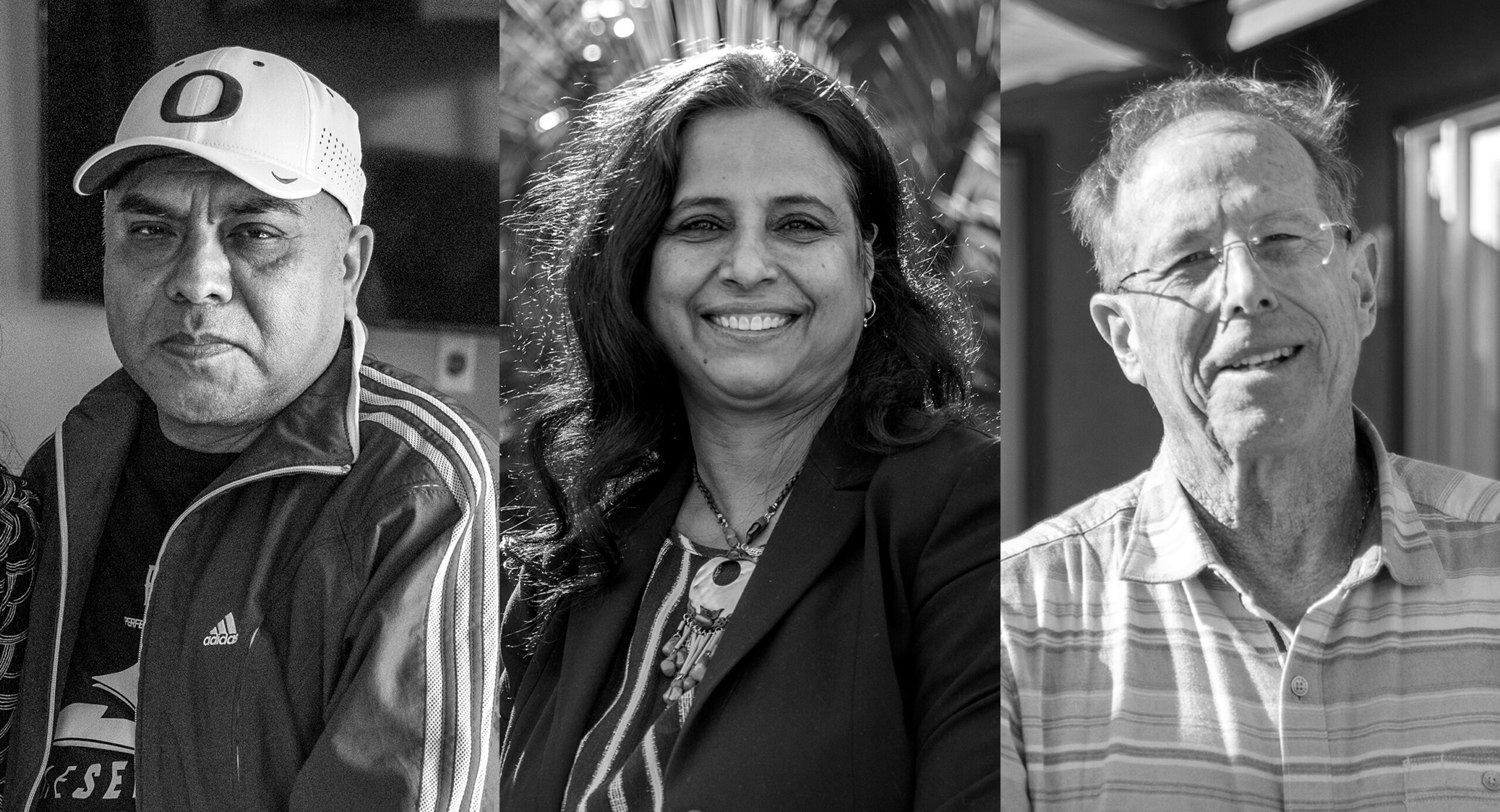
It’s been nearly a year since local health officials in China first reported an unusual cluster of viral pneumonia cases.
In February, the World Health Organization gave the disease, which was already rapidly spreading across the globe, a name: COVID-19.
Since then, one in 15 Nevadans has tested positive for the virus, or more than 200,000 people. Of those, more than 2,700 have died, 160,000 have recovered and 40,000 are still fighting COVID-19.
Behind each of those numbers is a name, and a story. They are doctors, hotel employees, essential workers and students. They are children, siblings, parents and grandparents. They live in Northern Nevada, Southern Nevada and everywhere in between. They are of every race, gender and age. There is no corner of Nevada that COVID has not touched.
These are the stories of 10 of those Nevadans. Click one of the names below to jump directly to their story, or scroll down to read all of them.
- Elisabeth Bell, 45, was sick for two weeks with COVID at home in Reno. Nearly six months after her symptoms began, she’s still suffering after effects, including fatigue and brain fog.
- Jose Beltran, 62, Tayde Elizalde, 58, and Jose Antonio Beltran Elizalde, 33, all tested positive for COVID-19 around the same time. Both father and son sought treatment at the hospital after experiencing symptoms, including difficulty breathing, high fever and dizziness.
- Sylvia Fuller, 93, died after being hospitalized for about two and a half weeks with COVID-19. She grew up in rural Arkansas, made lifeboats during World War II and ran her own business at a time when that was uncommon for women. She was a mother of two and grandmother of two.
- Harold Klein, 67, was hospitalized after losing consciousness and hitting his head at home. He tested positive for COVID-19 and was treated for pneumonia.
- Judy Klein, 75, spent more than a week in the hospital with COVID-19, receiving remdesivir and convalescent plasma. Two months later, she is still on oxygen 24/7 at home.
- JJ Mazzucotelli, 20, was bedridden with COVID for about a week. Mazzucotelli, a senior at UNR, now has to use an inhaler regularly.
- Naiyera Parween, in her late 50s, managed her COVID symptoms at home as a doctor. Had she not had medications and oxygen on hand, she said she would’ve ended up in the hospital.
- Richard Weisdorf, 84, died after spending 12 days in the hospital being treated for COVID-19. Born in New York, he was a real estate agent, husband, father of two and grandfather of one.
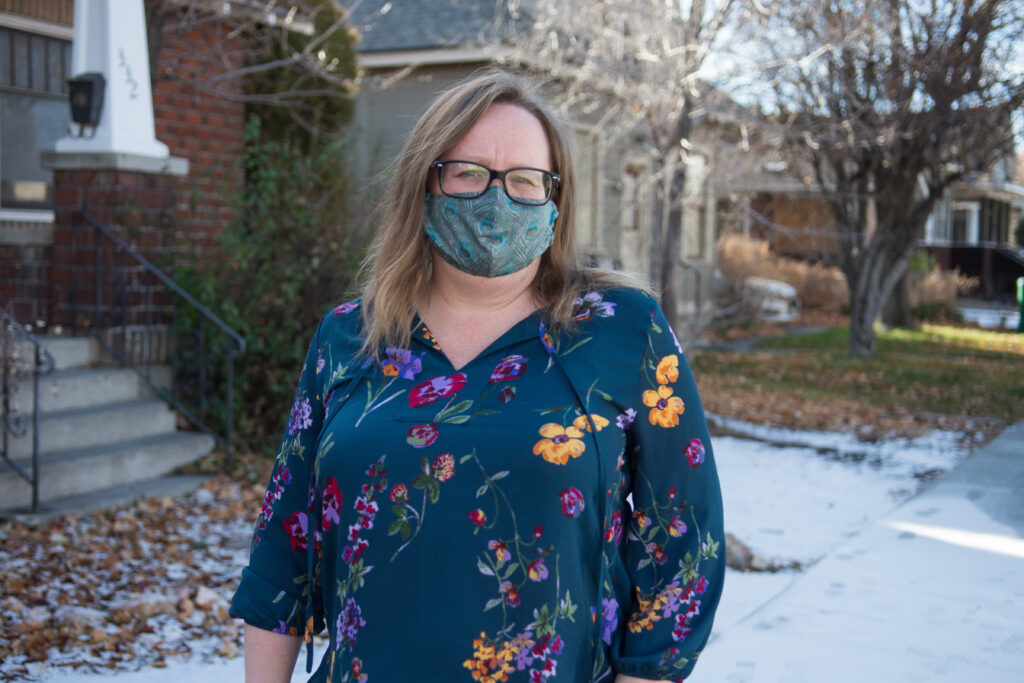
The internet was being stretched to its limits.
Work-from-home and virtual school was proving too much for two adults, one teenager and two young kids living in one apartment. So, to relieve some of the pressure, Elisabeth decided to form a quarantine bubble with her daughter’s five-person household.
Like her daughter-in-law, Elisabeth was working from home at the time. They decided that her daughter-in-law would come to Elisabeth’s apartment to work during the days, while the rest of the family focused on school at the other apartment. Any visits with friends or extended family outside the bubble were to be outside and socially distant. Elisabeth even started wearing a mask to the grocery store before it was a statewide mandate.
Still, Elisabeth acknowledged there was some risk.
“Everyone wants to do exactly the right thing and always do the right thing, but there’s a certain amount of luxury or privilege to being able to do the right thing, because you still do need childcare and you do need to work every day and you need to have somewhere to sleep,” she said.
On a Monday in late June, her daughter-in-law’s family came to visit from out-of-state. They were sick when they arrived and hadn’t warned anyone.
“I don’t hold any resentment, but that’s what brought it into my daughter’s house,” she said.
By Saturday, Elisabeth’s daughter-in-law was sick and had tested positive. Elisabeth was experiencing what she thought were allergies from the fire on Peavine Peak but had gotten tested as well and was awaiting her results.
When the chills set in the next afternoon, she realized it wasn’t allergies. That night, she had her first fever and, the following day, she got her positive result back. Over the course of two weeks, she experienced severe headaches, fatigue, muscle aches, vomiting, chest pain and difficulty breathing. She was extremely thirsty all the time but struggled to eat.
It was six weeks from when her symptoms began that Elisabeth said she was finally able to get dressed and go out in public. She said she’s had a severe flu within the past two years that kept her out of work for a week and that COVID was “definitely orders of magnitude worse.”
With the flu, she was able to drive herself to the doctor. It was uncomfortable, but she could do it. With COVID, she was barely able to make it from the bedroom to the bathroom, let alone drive a car.
It’s now been nearly six months since Elisabeth first got sick, and she’s still experiencing lingering effects from COVID. Elisabeth said that while she’s slightly overweight, she doesn’t have any pre-existing conditions and exercised regularly, running or walking up to two miles almost daily, before her illness.
After her illness, she could barely walk to the end of the block without being breathless, exhausted and in pain. She’s also experienced a few episodes of pericarditis, or swelling around the heart, and hair loss, which has stopped since she started taking vitamins.
“It’s really disconcerting to be not able to physically do the things you were able to do before,” Elisabeth said. “Initially it was very much, ‘Oh, I just need to get up and go and exercise and eventually I’ll feel better,’ but it wasn’t working like that. It was making me more tired and more in pain rather than less.”
Most frightening to her, though, is the brain fog, which she said was particularly bad for a month or two. One time, she had to step out of her house to look at her apartment number because she couldn’t remember it. Another time, she got into the shower and immediately got out, only to realize a half-hour later she hadn’t actually showered.
The brain fog is now down to once or twice a week, Elisabeth said. But she’ll still forget certain things, like the tunes for songs, and struggle to finish sentences.
“I very much have that sensation of, I know what I’m trying to say but I can’t find the correct word for it,” Elisabeth said.
Elisabeth has finally started to see some specialists for her long-term symptoms. While she had employer-sponsored health insurance while she was sick, Elisabeth lost her coverage when she was laid off, placing those specialist visits financially out of reach for her until her insurance at her new job kicked in recently.
Elisabeth said she is “definitely” more afraid of COVID now than she was before she had it and gets “worked up” about people who aren’t being careful. She also is particularly worried about the possibility of reinfection, which is uncommon but on the rise, now that she is many months out from her illness.
“People use the statistics of survival rates and mortality rates to say it’s not a big deal because this many people survived,” Elisabeth said. “People experiencing long-haul symptoms may be dealing with this for a long time. They’re in the ‘good’ column. They’re in the column where they survived. It’s not so black and white.”
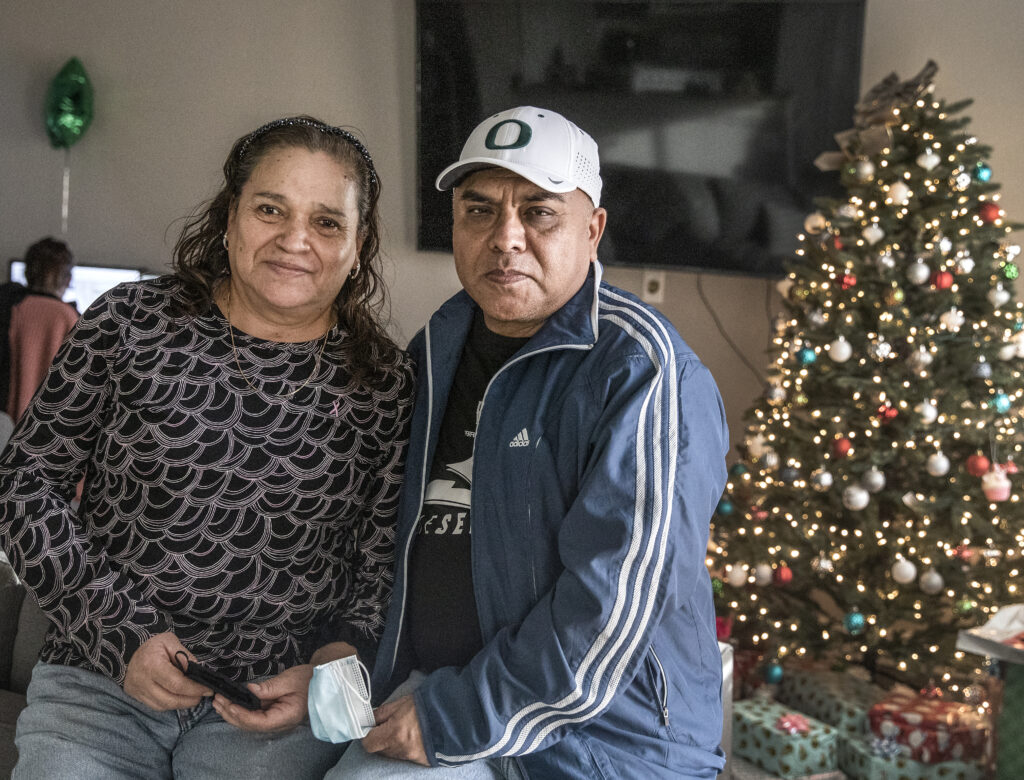
Jose Beltran, 62, Tayde Elizalde, 58 and Jose Antonio Beltran Elizalde, 33
It was early November when Jose, Tayde and their son, also named Jose, started feeling sick. At first, they thought it was just the lingering effects of the flu shots they had all recently gotten.
For the elder Jose, it started with a cough and a high fever. For Tayde, it was a low fever and the loss of her sense of taste and smell. For the younger Jose, it was dizziness, vertigo and difficulty breathing. So, they scheduled a COVID test.
The elder Jose was the first one to test positive, on Nov. 9. Tayde and their son got tested the next day, but their tests came back negative. The younger Jose, however, was still struggling to breathe, so his mom took him to the hospital, where he again tested negative for COVID-19.
The elder Jose, meanwhile, continued to have a high fever, which he was treating at home with Tylenol. At one point, he too went to the hospital, where the doctors found that his blood pressure was high and that his lungs weren’t doing well, which they gave him medication for.
“Every bone hurt,” the elder Jose said, in an interview in Spanish. “They were very strong pains.”
Jose noted how different each of their experiences with the virus were.
“It attacked us all differently,” Jose said. “My wife, she had a low-grade fever and it attacked her sense of taste and smell. My son, it was his respiration, respiratory problems and a cough. And it attacked me differently — fever and strong muscular pain. It was three very different reactions.”
In fact, it wasn’t until Tayde took an antibody test that she actually tested positive for the virus.
They’re still not sure how they got COVID. While the younger Jose works from home, his dad works at Vdara and Tayde works for Wynn Resorts — and they were both working at the time they all got sick with the virus. Tayde said they’re so cautious that when they leave the house in masks and gloves, it draws attention from the neighbors.
“People who don’t believe it’s real, well, it is real I think, but they continue to gather at birthday parties and gatherings with more than 10 people and still nothing has happened to them, but it did to us,” Tayde said. “Now, we are even more careful.”
Though their doctor cleared them to work, neither Tayde nor Jose have been back to work yet consistently. Tayde worked a couple of shifts but she said work has slowed down and they’re both on call.
Both Tayde and her husband are still experiencing lingering effects from the virus. Tayde said she still can’t taste or smell and she is now suffering from a painful, uncomfortable skin irritation that her doctor thinks she might have acquired when her immune system was vulnerable fighting COVID. Jose still gets stray headaches, can’t sleep well and gets sudden back pain.
“I’d like to tell people that this disease is very serious. This disease does kill,” Jose said. “I see a lot of people who don’t always follow protocol. There are a lot of people that still have this mentality that it’s not real, but I’ve had it, we had it, and we lived it. It’s a very painful and difficult experience.”
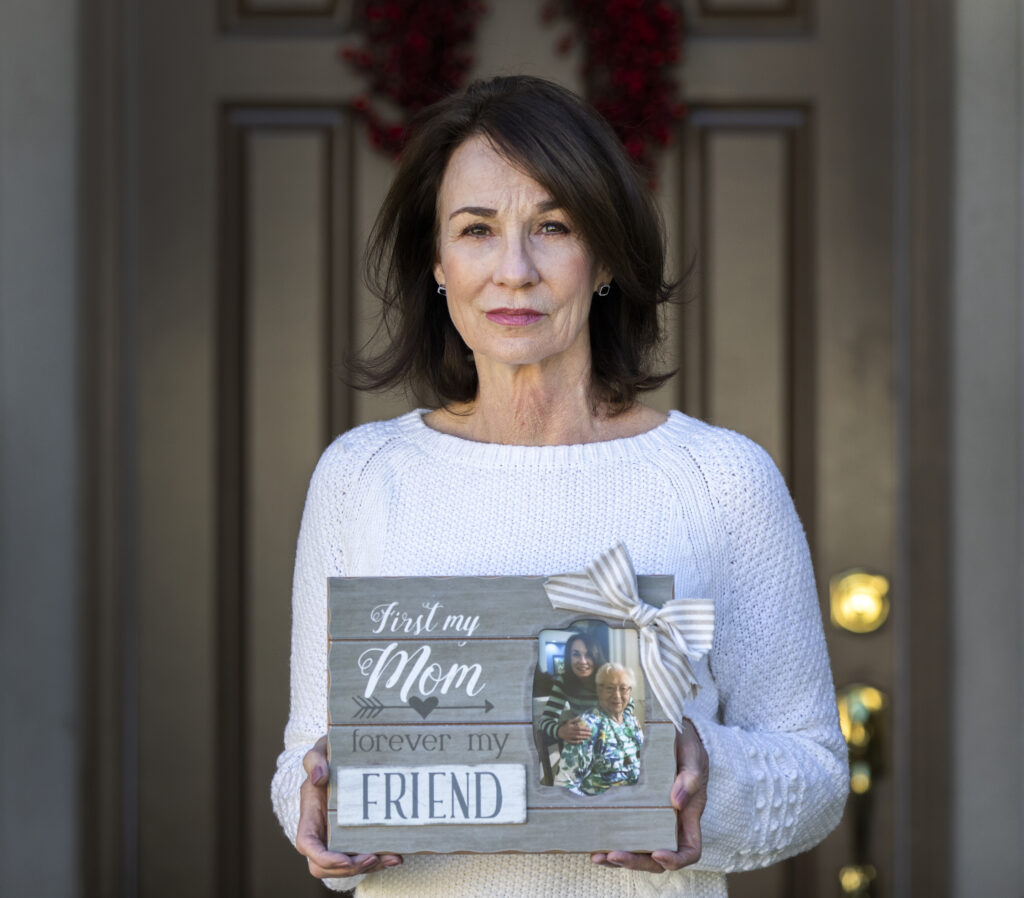
Once Sylvia awoke in the morning and had her breakfast, she was usually up for the day.
In mid-July, though, she started going back to bed after breakfast. At first, her daughter, Janet Fuller, didn’t think anything of it. Her mom had a slight cough, but that was normal between her allergies and asthma.
On one of those mornings, Janet, who helps her mom on the caregiver’s days off, put her mom back in bed and went home to take her dog out. When she came back, Sylvia was still in bed. Janet took her temperature: Sylvia had a low-grade fever. She called her mom’s primary care doctor, who told her to take her to the hospital right away.
At Southern Hills Hospital and Medical Center, the staff checked Sylvia’s oxygen, which was good, and said she seemed to be stable. They offered to keep her, but Sylvia didn’t want to stay, so they returned to Sylvia’s apartment in a senior independent living community in Las Vegas.
But when Janet returned later in the day to check in on her mom, Sylvia was nauseous. Janet called 911, and an ambulance transported the two back to the ER at Southern Hills, where they waited together until Sylvia was admitted in the evening of July 24.
Three hours later, Janet got a call from the nurse. Sylvia had tested positive for COVID-19. For several days, Sylvia seemed to be doing well on just a low dose of oxygen, which she also used at home just at night.
By the middle of the following week, the hospital staff said that Sylvia was doing well enough to be transferred to rehab. They planned to transfer her Thursday, in the middle of the night, but Janet asked that they wait until the next morning to make the transition easier on her mom.
About 9 a.m., Janet called the hospital to check in. A nurse answered. Rehab was off. Sylvia was experiencing some respiratory distress and being moved up to intermediate care at the hospital to be put on high-flow oxygen. Her doctor ordered remdesivir and convalescent plasma.
By the time the remdesivir arrived on Monday, Sylvia was experiencing complete respiratory failure. A few days later, a BiPAP machine was pumping oxygen into her lungs through a mask on her face. Janet said her mom was so short of breath that she couldn’t really talk to her, but a nurse told her Sylvia was “pretty miserable.” When Janet asked if they could give her mom Xanax to calm her down, they said no, it would depress her lung function too much. The convalescent plasma never arrived.
Janet and her sister would take turns each day to call and check in with the nurses. Her sister, who lives on the East Coast, would call at 6 a.m. to get the night nurse before the shift change and Janet would call in the evening. Sometimes they’d call five, six, seven, eight, nine or 10 times, and the phone would just ring. Finally, the staff offered to set up a few FaceTime calls with Sylvia, though Janet said it was difficult for her mom to speak.
By the middle of the week, Sylvia was struggling just to say, “I love you.” Janet knew it was hard for her mom to talk, so she wrote her letters every day, and brought her food and pictures, which she would drop off and a nurse or security guard would run up to her mom’s room.
At first, Sylvia had some trouble understanding what was happening to her. Janet said that she didn’t want to scare her mom by telling her that she had COVID, but she knew.
“She’d say, ‘Well, tomorrow is going to be a better day.’ At one point she said, ‘We just have to get through this,’” Janet said. “That was her attitude. I didn’t want to say, ‘Well, tomorrow is going to be a better day.’ I just tried to encourage her.”
By the end of the week, though, the doctor told Janet that Sylvia wasn’t getting better.
So, Janet wrote her mom, who she described as a “no nonsense person,” a letter. Writing it was the hardest thing, she said.
“I said, you can keep fighting, we can go on comfort care in the hospital and they’ll take this mask off you and put you on your regular oxygen and keep you comfortable until you pass — I just laid it out for her — or I could’ve gotten her transferred to Nathan Adelson [Hospice], but I don't know how long she would’ve lasted,” Janet said. “I said it was option one, two or three. She couldn’t speak, but she kept holding up her two fingers and said option two.”
When her mom chose to go on comfort care, Janet asked to be let into the hospital to see her, but they wouldn’t let her.
On Sunday, about an hour before they took Sylvia’s mask off, they called Janet and her sister on FaceTime.
“She could lift her hand up and waved,” Janet said. “She tried to say ‘I love you,’ but she couldn’t really do it.”
They called again at about 3:30 p.m. By then, they had taken the mask off and Sylvia was on regular oxygen. They had just given her morphine, and Sylvia’s eyes were closed, her head just to the side. At one point, Janet noticed that her mom’s breathing sounded labored, like she was struggling. The hospital staff said they’d go get more morphine.
“I said, ‘You don’t have it there?’ and they said the doctor thought she’d go faster,” Janet said. “And I was yelling and said, ‘Get it for her now.’ They gave it to her, and I could see her body relax.”
Sylvia died at about 4:30 p.m. on Aug. 9.
Janet said that, of course, her mom, at 93, had pre-existing conditions. But when people ask her that, it feels hurtful and dismissive, she said.
“She likely wasn’t going to die in August if not for this,” Janet said. “It’s like they’re making it okay because they were old, they have pre-existing conditions, so their life doesn’t matter. But their life does matter.”
Sylvia was born in rural Arkansas in 1926, one of what Janet described as a “slew” of kids. Her dad died when she was 10 months old, and Sylvia grew up in poverty. She didn’t graduate from high school until she was 19 because there were years she didn’t have shoes to wear to school in the winter. Sylvia worked at a converted tire plant making lifeboats during World War II and, after the war, met her husband in Memphis, before moving to California in 1949. Even though she didn’t have a college degree, she went back to school to earn the credits needed to get her real estate license and, later, her broker’s license.
“She had a business at a time when women didn’t have a business,” Janet said. “She said the women that had anything owned land and property. She was very passionate about it.”
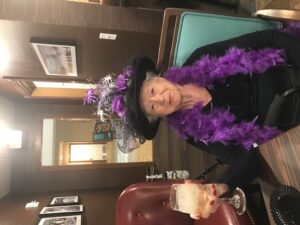
Janet described her mom as “quick-witted,” “very bright” and "a force". She was also a social butterfly who, when Janet threw her annual Christmas party, would invite 40 or 50 friends, and belonged to two bunco groups. Sylvia was also a mother of two and grandmother of two.
Janet suspects her mom may have gotten COVID from the lounge area in her community, where groups of people would gather to play cards but often did not wear their masks, she said. Janet isn’t sure that her mom understood the complete gravity of the pandemic, but she said Sylvia knew to wear her mask and washed her hands until they were raw.
Janet had also started wearing a mask around her mom a couple of weeks before she fell ill and socially distanced from her when in her apartment, just to be careful. She didn’t go out into the community other than to go to the grocery store and pick up her mom’s medications.
After her mom fell ill, Janet tested negative twice for COVID, once with a rapid test and once with a PCR test, and never got sick.
Janet said it frustrates her that COVID has become political and described mask-wearing as “such a small gesture to make for people.”
“You may not think it can happen to you, but it can,” Janet said. “It’s not only the loss of somebody you love, but it’s the terrible tragedy of how they die and, more than likely, they will die alone, and I don’t think that’s what any of us want for somebody that’s in that situation.”
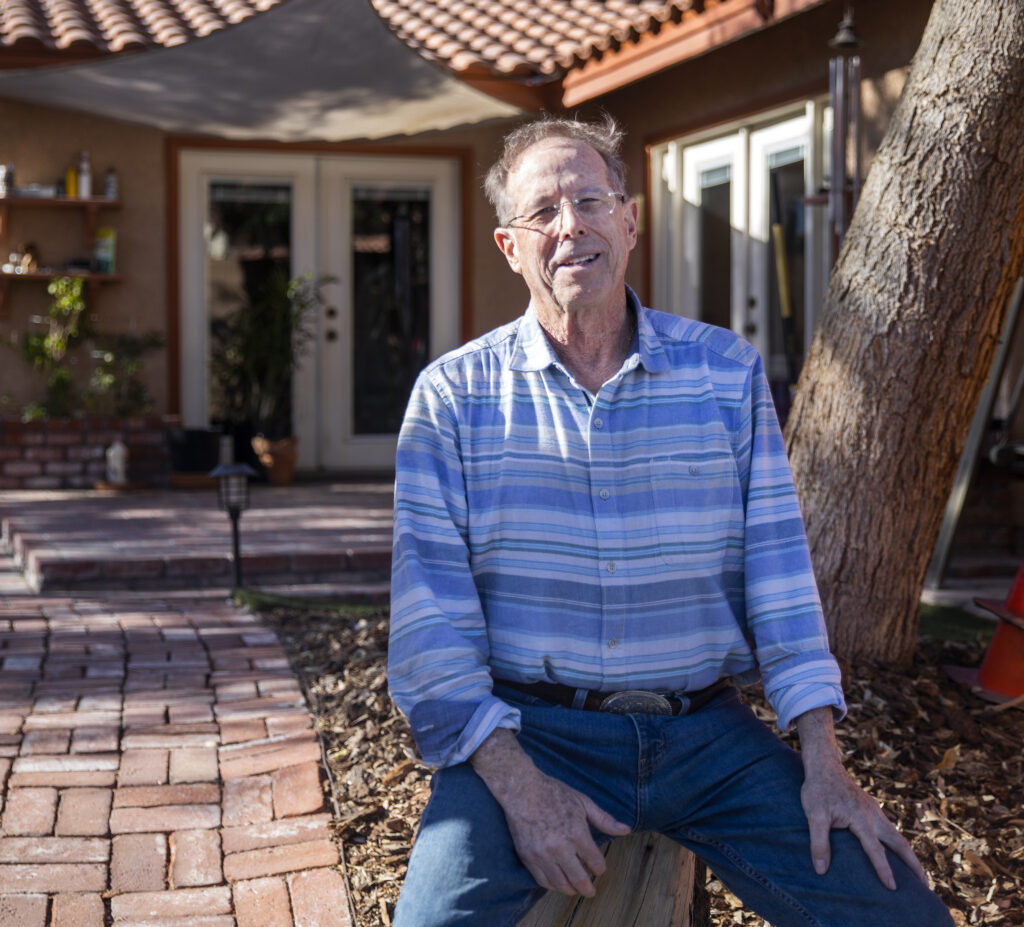
Harold has a pretty good idea of how he got COVID.
A retired Teamster, Harold has been out of work since February, when the convention industry essentially shuttered because of the pandemic. He now spends his days helping his friends and coworkers file unemployment and pension claims — at home, around his kitchen table.
And the only place he doesn’t mask up, Harold said, is at home.
“It could’ve been anybody that was over at my house for longer than 15 minutes who was asymptomatic,” Harold said. “That’s a high probability of how I got it.”
It was the middle of October when Harold started feeling sick, with coughing, a heavy feeling in his shoulders and fatigue. He knew that whether it was a cold, the flu or COVID he should stay home and isolate, so he did. His symptoms, however, continued to worsen over the course of the next week. He didn’t want to go to the hospital, so he called his brother.
“I just couldn’t feed myself. I can’t take care of myself. This is bad,” Harold said. “I called my brother and he said, ‘Go to the emergency room,’ and I was like, ‘I can’t go to the emergency room. How am I going to get to an emergency room?’”
As Harold puts it, he found a way. He passed out while on the phone with his brother, who called 911.
“I woke up in the living room in a puddle of blood. I must’ve gone to the living room and gone back down to the ground,” Harold said. “I remember crawling around the kitchen and then I saw the lights of the EMT. I said, ‘How did you get in here?’ and they said, ‘You let us in.’ I was going in and out at that time. I was very fortunate that my brother called the EMT.”
Harold doesn’t know what he hit his head on when he fainted, but the laceration on his head was bad enough that he was transported by ambulance to Sunrise Hospital for stitches. When the emergency room doctor asked if he fell often, Harold told him no, but that he had been sick since the 17th.
“I had to really spell it out for them,” Harold said. “I can’t smell shit. I can’t smell basil, I can’t smell honeysuckle, I can’t smell rosemary, I can’t smell lavender.”
The doctor ordered a COVID test. It came back positive.
They gave Harold two choices: Stay or go home. Harold chose to stay.
A CT scan of his chest revealed Harold had pneumonia. He was treated with an IV of azithromycin and vibramycin for five days, morning and night, and put on oxygen. Harold is grateful for the staff who treated him.
“It’s got to be bad when they have to come in and basically risk their lives every time they take care of you,” Harold said. “It’s like they are running into the burning building every time they walk into your room.”
Six days later, he was discharged and sent home with more antibiotics and oxygen.
“Every day was a little bit better, a little bit better, a little bit better,” Harold said.
Two months later, Harold is still recovering from the lingering effects from COVID. He now has tachycardia, a fast heart rate, which he is seeing a cardiologist for. He recently had an abnormal follow-up chest X-ray, which the doctors tell him is actually normal for COVID. He also suddenly runs out of energy, especially in the afternoons.
While Harold has chronic lymphocytic leukemia, which he has had for several years and isn’t yet being treated for, and some sinus drainage from allergies, he considers himself lucky that he doesn’t have other comorbidities. He believes that if he was overweight or had diabetes, he’d be dead.
“Once I was feeling back to normal, I had a new joy for life,” Harold said. “I don’t fear death, but I’m not welcoming it either, and that’s as close as I want to come for awhile.”
While Harold said he was cautious in public, he acknowledges that his decision not to wear a mask was his downfall.
“We need to social distance. We need to wash their hands. I got that, except at my own house, at my own kitchen table. I screwed up,” Harold said. “No place is safe. COVID doesn’t stop at your front door.”
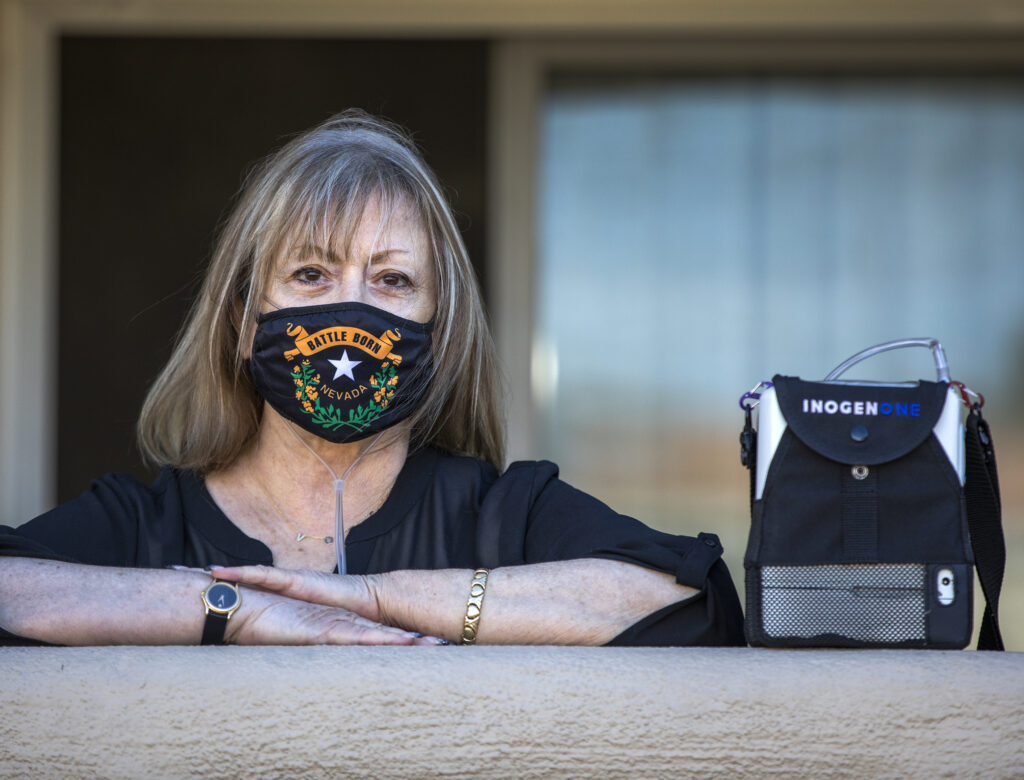
One day in October, Judy’s sister got a call.
Two days earlier, she had gone to a friend’s house to play cards. They hadn’t worn masks and all touched the same cards. That friend and her husband had now tested positive for COVID.
So, Judy and her sister, who live together, got in the car to go get tested for COVID. Her sister’s result came back positive. Judy’s was negative. Two days later, Judy started to have trouble breathing. It felt like she was choking. She had been put on oxygen years ago, which she used occasionally, but now she was using it all the time.
“It was like I was choking. You’re coughing, your face explodes red and you can’t get any air,” Judy said. “Once this started, I couldn’t walk from the bedroom to the bathroom without nearly collapsing because I couldn’t breathe if I didn’t have oxygen on.”
She went to go get another COVID test, paying for a rapid turnaround time. It came back that night: Positive. Judy knew what she had to do and drove herself to the ER at MountainView Hospital.
She knew that she was high risk. She has COPD and congestive heart failure, had stents inserted into her heart and is on medication for the transient ischemic attacks, or mini-strokes, she used to get. So, she had tried to be careful. She went to Trader Joe’s. When she saw family, it would be from her balcony with a mask on, or she would drive to their house and they would stand in the garage and she’d talk to them from her car.
“I did everything right because of what I have, I knew I was high risk and my kids kept telling me, ‘If you get this, you’re going to die,’” Judy said. “I said, ‘I don’t want to die. I’ve got grandkids.'”
But Judy’s 80-year-old sister still went out and about, to the grocery store, shopping and out to lunch with friends. She wore a mask, Judy said, but still was just generally more mobile.
“That’s just her makeup,” Judy said. “She’s 80 years old. I’m not going to change that.”
When she arrived at MountainView, the staff welcomed her back, Judy said, as she had been hospitalized twice this fall for sepsis, once in September and once in October. They also immediately moved her to a waiting room for COVID patients when she told them she had tested positive. By the evening, she had been admitted. Her X-rays showed double pneumonia in her lungs, a common complication associated with COVID.
The doctors treated her with remdesivir and with convalescent plasma. They gave her prednisone to open her lungs and help her breathe. They gave her shots in her stomach and fed medicines into her IV.
Things were bad, Judy said. Her kids called her. Her friends texted her. She told them she didn’t think she was going to make it. They’d tell her they knew she was going to.
Her mind wandered to the minutiae. She has an external hard drive with family pictures dating from 1894 to the present — would anyone know where to look for it if she didn’t make it? She thought of her grandkids and how there’s never enough time you can spend with them. They video called her in the hospital, crying. It pained her to see them crying.
“There were a few days where I was really fighting. ‘No one’s taking me out. I’ll go out when I’m ready.’ But what this does to you is it doesn’t give you a choice,” Judy said. “It takes over your body. It takes over your mind. It takes over your vital organs. There isn’t anything it doesn’t invade.”
“It doesn’t care who you are. It doesn’t care if you have money or no money. It doesn’t care what color you are. It doesn’t care about your religion or your gender,” Judy added. “This isn’t like the flu where you’re down for a few days, where you’re going to get rid of it. It’s scary stuff, really scary.”
She wasn’t scared, though, so much as remorseful — that she could’ve, or should’ve, done more. But she said it was almost a relief to know that the suffering would end.
“It’s almost a relief when you feel that bad,” Judy said. “It’s almost a relief to know you won’t feel that way anymore.”
But then, all of a sudden, Judy could feel herself getting better. She still had double pneumonia, but she asked the hospital staff if she could go home. At the time, hospitals were growing increasingly crowded and she knew the hospital needed the extra beds.
It’s been weeks now since she’s been home, and she still hasn’t fully recovered. It’s hard to breathe while walking. She can’t carry groceries into the house. She’s on oxygen 24/7 now. She’s getting more tests to see if she has any lingering heart damage.
“I wasn’t an old 75. Now, I’m a 75-year-old,” Judy said. “This has really done damage.”
But one of the most troubling lingering symptoms is the brain fog. She’ll know what she wants to say — like the word for the color red, for instance — but it’s as if the word is floating around somewhere inside her head and she can’t quite find it.
“It diminishes you in a way,” Judy said, “It’s not old age, it’s not dementia, it’s the stinking COVID.”
Still, Judy considers herself lucky because she survived. Her family has come to visit her on her balcony. They wear masks, and she does too. And when they can’t do that, they video chat her.
“Even though I have these residual effects, I still get to see my grandkids,” said Judy, who has four kids and four grandkids. “I still get to see my kids, and that’s what’s important in life. It’s family.”
And she doesn’t blame her sister, who, fortunately, had a mild case of COVID and recovered quickly. She does, however, wish she would’ve worn a mask in the car with her when they both first went to get tested.
“If it wasn’t her, who knows? I learned that you can’t account for somebody else’s behavior no matter what. Even though we’re sisters, we’re different. My thoughts on how I could survive this were different than maybe her thoughts,” Judy said. “But you can’t get mad, and you can’t go backwards. It doesn’t do anybody any good.”
“To lay blame, who do we lay blame on? And then I’ve got to blame people who gave it to her and who gave it to them,” she added. “There’s just too many doors to open.”
It does, however, bother her that people don’t want to wear masks in public.
“Your responsibility in this world, if you live in this reality, is that you share it with other people,” Judy said. “If you do, you have to take responsibility to take care of other people.”
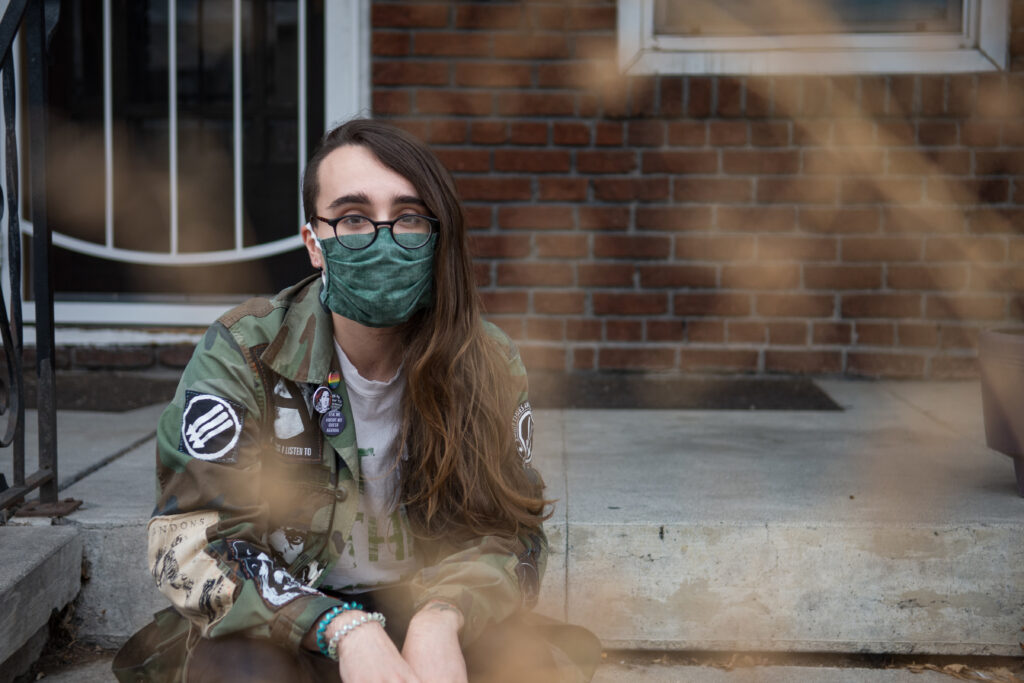
It all started with a birthday party. One of JJ’s friends wanted to hold an outdoor, socially distant movie night with a projector, but she had one request: That they all get tested for COVID-19.
JJ’s partner got tested first. Their results came back positive. Then JJ and their roommate got tested on Oct. 13. By that time, all three of them were feeling symptoms. A couple days later, the test results for JJ and the roommate came back: They were positive too.
For JJ, it started off just with a light cough.
“I wasn’t too worried about it. I got tested and it came back positive, and I was like, okay, I’m going to go home, relax, I’m going to be a shut in for the next two to three weeks,” JJ said.
Then, the body pain, fatigue and shortness of breath set in. JJ would try to get up to walk around but start having a coughing fit and have to return to bed. In total, JJ was bedridden for about a week and sick for two and a half weeks. They contacted their doctor, who told them to stay home and, if they have trouble breathing, to go to the hospital. Luckily, JJ was able to manage their symptoms at home with NyQuil.
But about a month after JJ had fully recovered and returned to work, they were still having coughing fits and shortness of breath. They went to see their doctor, who gave them an inhaler to now use regularly. JJ now has to use an inhaler two or three times a day, walking up and down the big staircase at the Nevada Museum of Art, where they work, walking to work, or any time they start coughing or experiencing shortness of breath.
“I have to use it during super normal tasks that were never a problem,” they said.
JJ didn’t have any specific pre-existing conditions before contracting COVID, though they did have pneumonia twice in high school and bronchitis last year. They noted that whenever they get sick though, it tends to go to their lungs.
JJ, their partner and their roommate, who all live together, are still not sure how they got COVID. They live in a house that’s divided into apartments that share an air circulation system, and they noticed that some of their neighbors were coughing a lot before they all fell ill. They only left the house if they had an in-person class, had to go to work or needed to go to the grocery store.
In retrospect, JJ is thankful their friend asked them to get tested before her birthday party.
“Otherwise, it would’ve gotten worse,” JJ said.
After falling ill, the three roommates had a conversation about whether there was anything they could do to be more careful but couldn’t think of anything they weren’t already doing. JJ, for instance, was afraid that they had given COVID to their younger siblings or parents — even though the only interaction they had had was them dropping packages off at their front door.
“That was really my fear more than anything, more than actually even getting sick, was this very irrational fear that I had given this disease that could be really deadly for some of my siblings to one of them,” JJ said.
Their other concern was how they would afford their hospital bills in the event that they fell seriously ill. JJ said that though they are still on their parents’ insurance, which would’ve covered them relatively well, an ambulance ride and a week’s hospital stay could have quickly eaten up all their savings.
“If I have to go and be checked into the hospital and be in an intensive care unit, that’s going to eat away all the money I have saved up,” JJ said. “The actual sickness was maybe less of my concern than I’m sick and can’t make rent. What happens next?”
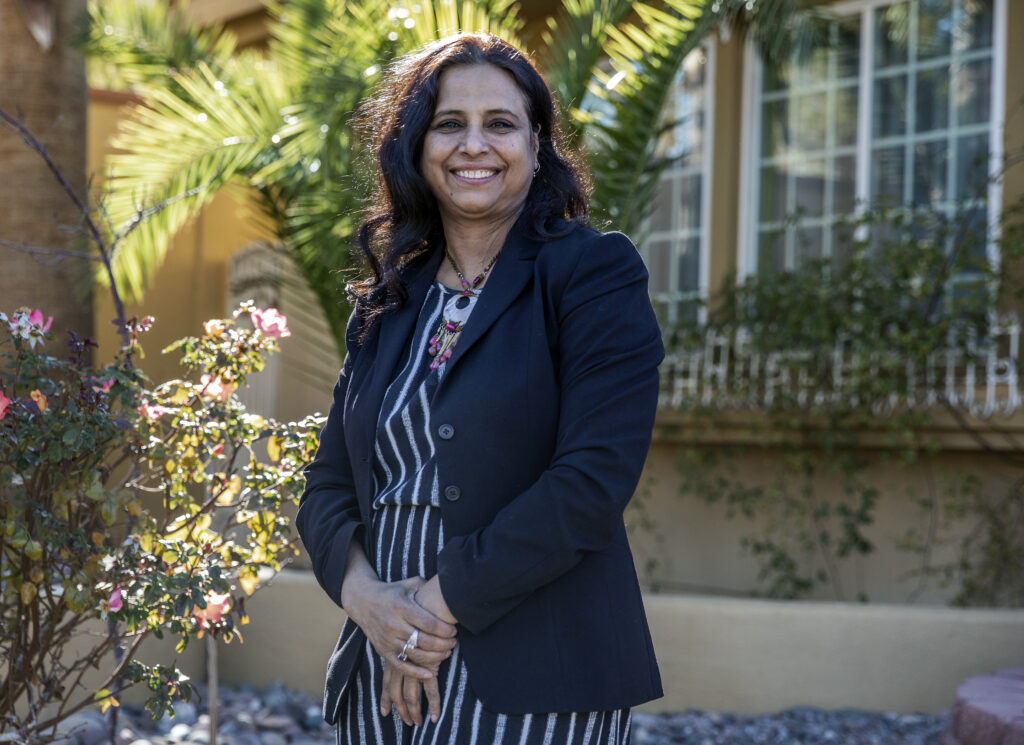
Naiyera Parween, in her late 50s
Two days after her husband tested positive for COVID-19, Naiyera started experiencing symptoms. Both of them are doctors, so he isolated himself in their house as soon as he starting feeling sick. But it was too late: Naiyera had also started experiencing symptoms, including a chill and a scratchy throat.
She made a COVID testing appointment, which, at the time she fell ill in June, was still pretty difficult to get, and was surprised when she showed up to the testing office and was handed a do-it-yourself nasal swab kit. Despite being a doctor, she didn’t know how to administer a nasal swab to herself and was afraid of doing it wrong.
“Because I had some symptoms, I wanted it to be done the right way because I was serious about the results,” Naiyera said. “I was worried about the result, if I didn’t get an accurate result.”
By the third day, her symptoms worsened. She started experiencing shortness of breath with mild exertion, as well as gastrointestinal symptoms. By the time she received her positive test result a few days later, she was experiencing chest pains that seemed to be changing locations every minute. As a doctor, she knew the pains were happening in some “very scary locations” in her body, so she checked her oxygen level. It was 95 percent, down from her usual 99 percent.
Luckily, again, as a doctor, Naiyera had oxygen at home and started administering it to herself intermittently. She also texted one of her physician friends in New York who had gone through COVID and recovered from it, who recommended a regimen of dexamethasone and albuterol. But no matter what she did, it felt like her lungs weren’t working. The only thing that helped was sitting in the bathroom, breathing the steam from the hot shower.
A week after her symptoms started, Naiyera still wasn’t improving, but she worried about going to the hospital, not knowing what would happen to her. She finally decided to go to a freestanding ER affiliated with the Valley Health System because she knew they didn’t have hospital admitting privileges.
They did her blood work and took both a chest X-ray and a CAT scan, which revealed a ground-glass appearance in her lungs.
“If you are lucky enough, it does not involve too much of your lungs,” Naiyera said. “If it involves too much of your lungs, you go on a ventilator.”
The ER staff asked her if she wanted to be admitted to the hospital and she told them no, that she would handle it at home. But she said that without a doubt, had she not been a doctor, had her husband not been a doctor, had her daughter not been a med school student living at home with them, and had she not had oxygen and the medications at home needed to treat herself, she would’ve ended up in the hospital.
“I was already preemptively getting all the treatment I could have gotten in the hospital, except for the remdesivir, which thankfully I never needed, but the rest of them I had already taken,” Naiyera said. “I had something in my mind that even if I went to the hospital, I would get the same treatment, so I didn’t want to occupy a bed or get more exposed or expose other people.”
So, Naiyera rationed her oxygen supply and treated herself at home in Henderson. When it dipped down to 90, 92 or 93 percent, she would give herself 20 minutes of oxygen every two hours to bring it back up to 95 or 97 percent.
“I was very careful with my oxygen, because it’s not a supply that you can get at any time,” Naiyera said.
Just as Naiyera’s energy started to return, she started experiencing more gastrointestinal symptoms, so she got another CAT scan for her abdomen, which came back clear.
Finally, by mid-July, almost a month since she first started experiencing symptoms, she started to feel a little bit better. In total, she was out of work for eight weeks.
Even today, many months later, Naiyera still gets fatigued easily, particularly when she’s walking fast or a long distance. She also now has high blood pressure, which she never had before and now has to take medication for, and sometimes has a rapid heartbeat. As she’s managing the lingering effects of COVID in her own life, she’s also seeing them in her patients. One of her patients is so weak that she can’t walk without a walker.
“Muscle weakness is common, dizziness is common, cardiac problems are very common,” Naiyera said. “It’s a very dreadful disease.”
She counts herself among the lucky ones, because of the support system she had at home with her son and daughter caring for her. She noted that her children took strict precautions with her and her husband, wearing gloves, masks and face shields, and both her children tested negative for the virus, despite coming into her room three times a day. Her niece, who was also visiting at the time, tested negative for the virus, too.
Naiyera noted that she and her husband were busy with work, her children were busy with their online classes and her niece was busy with her remote work that they didn’t intermingle too much even before she and her husband fell sick.
“This is a good proof that if you observe all of those things even if you are in the same household you can save yourself from the disease,” Naiyera said.
The lingering question for Naiyera is how she got the virus. They don’t socialize with friends and their only outings are to get groceries and run other essential errands. Initially, she suspected that her husband, who is an internal medicine doctor and sees patients across multiple hospitals, long-term care facilities and nursing homes, was the one who got the virus first, just because of the number of exposure points he had compared to her, a family practice doctor. But when she returned to work, she realized two patients she had seen just before falling ill had been sick with COVID.
“I am not sure if I got it from a patient, but definitely I have seen patients who are now coming back to me and their visit was within that week,” Naiyera said.
She has, however, changed practices since returning to work. She now wears a face shield in addition to a mask and wears a disposable white coat, and she and her husband now immediately take off their clothes and shower in a dedicated bathroom upon returning home from work.
“Now we have to take every patient as a potential case,” Naiyera said. “Before we did not know about asymptomatic carriers.”
Naiyera said the scariest thing about COVID is that once you’re sick with it, your body is on autopilot. You don’t know whether you are going to get better or worse and your symptoms can change in a flash.
“You don’t know if you’re going to be alive or not once you have it,” she said. “It is a very scary feeling.”
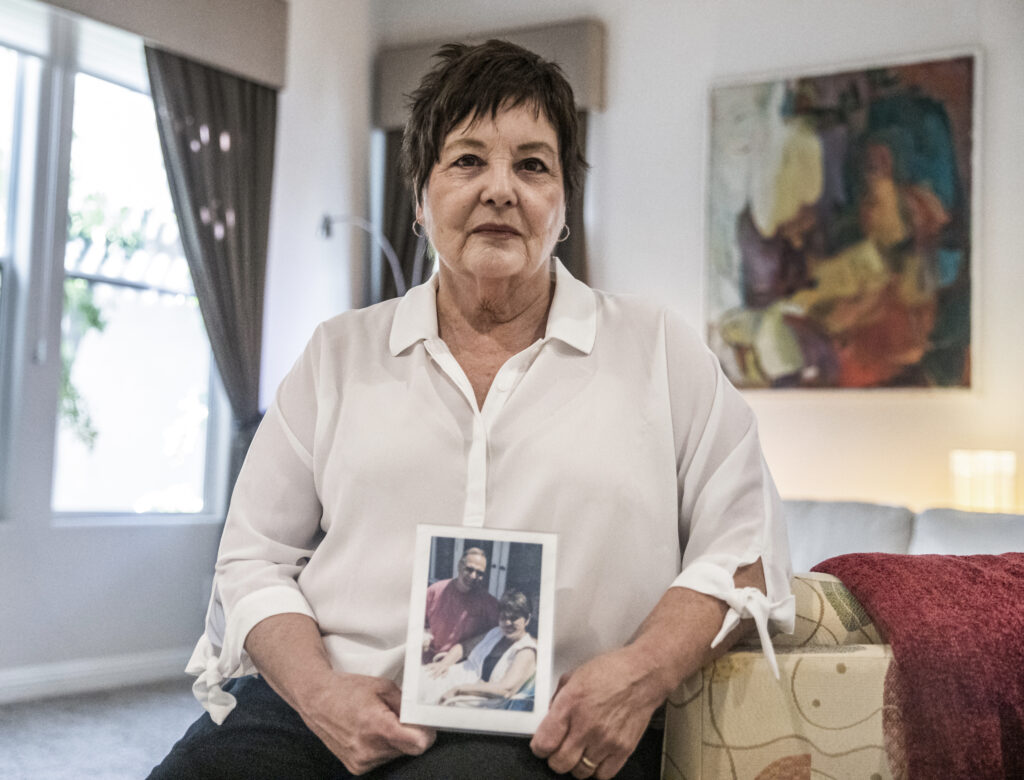
At first, it just seemed like Richard was sleeping a lot.
The 84-year-old real estate agent routinely checked his temperature and didn’t have a fever. He didn’t have a cough either. But his wife, Joyce Weisdorf, noticed he was struggling to hold his head up at the breakfast table. When she woke up in the middle of the night to the sound of his labored breathing, she called the doctor.
It was the middle of July, during the first surge in COVID-19 hospitalizations. Richard didn’t want to go to the hospital, but the doctor told them to go, so to the hospital they went. As Joyce pulled the car out of the driveway, their granddaughter, Sam, gave him strict instructions: “Grandpa, you have to come home tomorrow.”
Richard’s response was grim.
“Sam, I’m not coming home,” he said.
The doctors at Southern Hills Hospital and Medical Center didn’t initially suspect COVID. Richard had a defibrillator and pacemaker. Congestive heart failure, maybe, they thought. But they tested him for the virus all the same, which was spreading like wildfire throughout Southern Nevada. Around midnight, the hospital staff told Joyce to go home and that she could come back the next day, once Richard tested negative, as they expected him to. Joyce received a call from the doctor the next morning. Richard had tested positive.
“That was the last time I saw him before I saw him on his last day,” Joyce said.
For seven or eight days, the doctors told Joyce that Richard was doing okay, though he had been treated in the ICU, and that they thought he would get through the virus. They even sent oxygen home so he could continue his recovery there. Joyce busied herself by making food runs to the hospital.
“He would call me and say, ‘Could you bring me some orange juice? The food here is terrible. Could you bring me a bagel and cream cheese?’” Joyce said. “I made a couple of bagel runs to him.”
They treated Richard with oxygen — first, with a nasal cannula, the small tube that sits just inside the nose, and then, with a BiPAP machine, which pumps oxygen into the lungs through a mask on the face. At that point, it was hard for Richard to talk on the phone, though Joyce would still call him so he could hear her voice.
“He was worried,” Joyce said. “He couldn’t figure out really what was happening to him in the sense that I'd say, ‘Are you feeling any better?’ and he would say, ‘I don’t know, I have this oxygen.’”
They treated Richard with plasma and even hydroxychloroquine, though they couldn’t give him remdesivir, an antiviral drug, because his kidney function was too low. Joyce said it seemed like the doctors were throwing spaghetti at the wall.
Saturday morning, 12 days after Richard had arrived at the hospital, Joyce got a call from the doctor. Richard’s kidneys had failed, and he wasn’t a candidate for dialysis. The doctor told her the end was near.
“I said, ‘Please, I have to be there. Can I come? And I don’t know, God sent me some angel because the doctor said, ‘Okay, go put your clothes on but promise me you won’t run any red lights,'” Joyce said.
A security guard escorted Joyce up to Richard’s floor, where they got her gowned up to enter her husband’s room to say goodbye. The nurse told her that if she didn’t tell anybody, she could take the mask off so Richard could hear her better. (Joyce had also tested positive for COVID-19, though her only symptoms were the loss of her sense of taste and smell and gastrointestinal upset.)
The hospital staff told her that Richard had said that he didn’t want to be kept on life support, but Joyce needed to hear it for herself.
“I said, ‘Richard, do you want to keep this going? Do you want them to keep treating you?’ And he shook his head so hard ‘no’ that I thought his head was going to come off his neck,” Joyce said. “I said, ‘So you’re telling me you don’t want it?’ and he shook his head ‘yes.’”
At one point, the nurse came in and Joyce remarked that the hospital must be so overwhelmed with loved ones coming in to say goodbye. The nurse told her that she was the first person in four months that had been allowed to come up to the floor.
“I’d been praying every day to God to heal him, and he couldn’t do that but he did the next best thing which was to not let Richard die alone,” Joyce said.
The nurse told her that once she administered a shot of Ativan and a shot of morphine, Richard’s breathing would slow down and he would be gone, and that if there was anyone she wanted to contact, she should do it now. Once the nurse left the room, Joyce got her granddaughter and her mother on FaceTime, with their dog, and called Richard’s son and sister. Joyce told him how much she loved him and that she didn’t want to see him go.
Then, the nurse came in and administered the shots.
“I held his hand all the way, and I stroked his cheek and his forehead,” Joyce said. “I would’ve gotten in bed and laid next to him but he had so many tubes in him that you couldn’t really do it, so I did the best I could by holding on his hand and stroking him and, in the end, I just kissed him.”
At one point, about a half hour later, Joyce looked up at the nurse and asked if Richard was gone. The nurse said yes.
It was 12:11 p.m. on July 25.
Joyce doesn’t know where they caught COVID-19. They had gone to Target a week before Richard was admitted to the hospital and remarked on how many people weren’t wearing masks. They went to the grocery store, to put gas in the car and to get takeout, but they wore masks and cleaned. Joyce’s brother and wife came over a couple of times but social distanced.
Richard, at 84, was at higher risk for COVID-19. He also had some pre-existing conditions. He had a defibrillator and a pacemaker, his kidney function was in the low range and he took high blood pressure medication. But Joyce noted that if not for COVID, her husband would still be here today.
“If he never got COVID, he wouldn’t be dead,” Joyce said. “If they were able to do something with COVID like the rest of the world did, he’d still be here.”
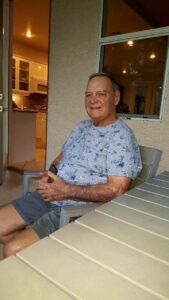
Richard was born in New York City but moved during his childhood to Los Angeles, where he graduated from high school before attending UCLA. He served in the Army Reserves, which he left as a captain, before working in the apparel business. Richard and Joyce eventually went into real estate together.
Joyce remembers Richard as an extremely intelligent, curious man who would tear through spy novels. He had a droll, almost sarcastic, sense of humor, she said, and was a gentleman, in an old fashioned way.
Joyce acknowledged that it’s difficult to stay home these days. But she urged people to trust the scientists and medical community, wear a mask, keep themselves as clean and safe as they can — and to enjoy every day, because you never know what is going to happen.
“One of the things looking back now that I treasure is that we were quarantined since March and I spent the most intense quality time I ever spent with Richard,” Joyce said, “and I don’t regret one minute of it.”
Jazmin Orozco-Rodriguez contributed to this report.
